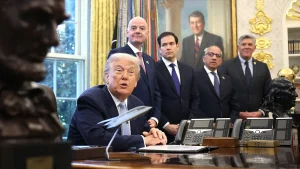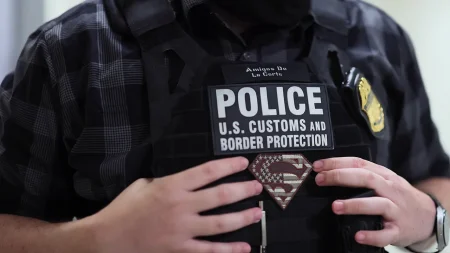Russia, China, and India Forge Strategic Alliance to Counter Western Influence
New Axis of Cooperation Emerges as Leaders Display Unity on Global Stage
In an elaborate display of diplomatic solidarity, the leaders of Russia, China, and India recently gathered in Beijing for a high-profile summit that signals a potentially transformative shift in global power dynamics. The meeting, characterized by warm handshakes, elaborate state dinners, and carefully choreographed photo opportunities, represented more than mere diplomatic courtesy. It marked the public emergence of a strategic partnership explicitly positioned as an alternative to Western—particularly American—dominance in international affairs.
Russian President Vladimir Putin, Chinese President Xi Jinping, and Indian Prime Minister Narendra Modi used the summit to showcase their shared vision for a multipolar world order. The three nations, representing nearly 38 percent of the global population and approximately 25 percent of the world economy, deliberately framed their alliance as a counterbalance to what they described as the “hegemonic tendencies” of Western powers. “Today we witness the birth of a new paradigm in international relations,” declared President Xi during the summit’s opening ceremony. “One based on mutual respect, sovereign equality, and genuine multilateralism—principles that have often been neglected in the current global system.”
Economic Cooperation Forms Foundation of Emerging Partnership
The economic dimension of this trilateral relationship appears to be its most immediately promising aspect. Trade between the three nations has surged dramatically over the past five years, with China-India commerce exceeding $135 billion annually despite persistent border tensions. Meanwhile, Russian energy exports to both Asian powers have reached record levels following Western sanctions related to the Ukraine conflict. The summit produced concrete agreements on infrastructure development, technology transfer, and financial cooperation, including expanded use of local currencies in cross-border transactions—a direct challenge to the dollar’s global dominance.
“We are establishing mechanisms that will insulate our economies from external pressure and coercion,” stated Putin, in a thinly veiled reference to Western sanctions. The three nations announced the formation of a joint investment fund totaling $30 billion to finance critical infrastructure across their territories and in partner nations throughout Asia and Africa. Additionally, they unveiled plans for a dedicated financial messaging system to reduce reliance on SWIFT, the Western-dominated international payment network. These economic initiatives demonstrate that beyond rhetorical solidarity, the three powers are creating tangible alternatives to Western-controlled economic systems.
Military Cooperation Raises Concerns Among Western Analysts
Perhaps most concerning to Western observers is the emerging military dimension of this relationship. While falling short of a formal defense alliance, the three nations announced expanded joint military exercises, enhanced intelligence sharing protocols, and new frameworks for defense technology cooperation. Russia, facing isolation from Western defense markets, has accelerated weapons transfers to both China and India, despite the awkward reality that these systems could theoretically be used against each other in a future conflict. Naval cooperation has been particularly emphasized, with trilateral exercises planned in both the South China Sea and Indian Ocean—strategically crucial waterways where Western naval presence has long been dominant.
Defense analysts note that these military arrangements, while significant, remain constrained by lingering mutual suspicions and competing regional interests. “This is not NATO in Asia,” explained Dr. Elizabeth Chen, international security expert at the Council on Foreign Relations. “These are pragmatic arrangements between powers that still harbor deep historical mistrust. However, their shared opposition to Western military predominance provides sufficient motivation to overcome those reservations, at least temporarily.” The Pentagon has reportedly accelerated contingency planning in response to these developments, particularly regarding naval operations in the Indo-Pacific region where the three powers now present a more coordinated challenge.
Persistent Tensions and Contradictions Threaten Long-term Viability
Despite the public displays of unity, significant fissures remain beneath the surface of this strategic triangle. India and China continue to militarize their disputed Himalayan border, where deadly clashes occurred as recently as 2020. Russia’s increasing economic dependence on China has created an asymmetric relationship that undermines Moscow’s traditional great power self-perception. And India, while eager to assert strategic autonomy, maintains crucial security partnerships with Western democracies through mechanisms like the Quadrilateral Security Dialogue with the United States, Japan, and Australia.
These contradictions were carefully managed during the summit, with contentious issues deliberately excluded from the agenda. “What we’re witnessing is a relationship of convenience rather than conviction,” observed Dr. Samir Patel, director of the Center for Strategic Studies at Georgetown University. “These powers agree on what they oppose—Western dominance—more than what they support.” Nevertheless, even this limited cooperation represents a significant challenge to the post-Cold War international order. The three nations have demonstrated increasing coordination in international forums like the United Nations, often forming a voting bloc on issues ranging from human rights to climate policy to internet governance, effectively diluting Western influence in multilateral institutions.
Implications for Global Governance and Western Response
The emergence of this trilateral partnership carries profound implications for global governance in the coming decades. By offering diplomatic, economic, and security alternatives to Western-led arrangements, Russia, China, and India are accelerating the transition toward a genuinely multipolar international system—one where Western preferences no longer automatically prevail. Their initiative resonates particularly strongly across the Global South, where many nations harbor lingering resentments about colonial legacies and perceive Western-dominated institutions as insufficiently responsive to their development needs.
Western capitals have responded with a mixture of concern and strategic recalibration. The United States has intensified diplomatic outreach to India, hoping to weaken the trilateral arrangement by emphasizing China’s regional ambitions. European leaders have proposed reforms to international financial institutions to make them more inclusive and representative. “We must acknowledge the legitimate desire for greater representation while defending the core principles that have underpinned international stability,” stated German Chancellor Olaf Scholz at a recent EU summit addressing the challenge. As this new alignment consolidates, the coming years will likely witness an intensified competition not merely for power, but for the fundamental principles that will govern the emerging international order. The Russia-China-India partnership, despite its internal contradictions, represents a structured challenge to Western leadership that cannot be dismissed as merely symbolic or temporary. Whether this challenge ultimately strengthens or undermines global stability remains the central geopolitical question of our time.











